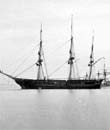
Day-by-Day Timeline of Events
January 9, 1861
The steamer "Star of the West", laden with supplies and en route to Fort Sumter in Charleston (South Carolina), is fired upon by land-based cannons.
January 12, 1861
Star of the West, a steamer having delivered supplies to Fort Sumter in Charleston, South Carolina, returns to New York with her battle-damaged hull resulting from a Confederate attack.
February 21, 1861
Stephen Mallory is appointed Secretary of the Navy for the Confederate States of America.
April 17, 1861
Confederate President Jefferson Davis calls on any and all privately-own vessels allied to the southern cause to openly attack Union merchants.
April 19, 1861
President Lincoln calls on all southern ports to be blockaded, the territories in question being the lower East Coast all the way to the Gulf of Mexico.
April 20, 1861
Union forces destroy a section of the Norfolk Navy Yard in Virginia before abandoning it.
April 24, 1861
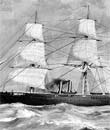
April 27, 1861
President Lincoln adds east coast ports in Virginia and North Carolina to the existing naval blockade action of the South.
June 2, 1861
CSS Savannah manages to beat the Union blockade of Charleston Harbor and escape to open water.
June 3, 1861
En route from Cuba and laden with a cargo hold of sugar, USS Joseph is intercepted and captured by CSS Savannah.
June 3, 1861
USS Perry manages to capture CSS Savannah and her crew intact. The prize is relocated to New York waters.
July 1, 1861
At this point in the war, the United States Navy claims a fleet of over 80 warships and some 13,000 personnel.
August 3, 1861
For the first time in warfare a reconnaissance balloon is used by Union forces to assess Confederate positions. The balloon is launched from USS Fanny at Hampton Roads to observe the enemy at Sewell's Point, Virginia.
September 3, 1861
Confederate forces move into Western Kentucky and take Columbus along the all-important Mississippi River.
September 13, 1861
Forces from the frigate USS Colorado burn an enemy ship during a raid on Pensacola, Florida. The group is led by Lieutenant J.H. Russel.
September 17, 1861
Ships of the United States Navy move in to secure Ship Island off the coast of Mississippi.
October 4, 1861
United States Navy authorities put into place plans for its first ironclad warship - to become the famous USS Monitor.
November 8, 1861
USS San Jacinto captures the British mail steamer "Trent" en route from Havana to Europe - aboard are a pair of Confederate commissioners, James Mason and John Slidell.
November 11, 1861
The Union ship G.W. Parke Curtis releases an observation balloon to spy on Confederate positions off the Potomac River.
November 12, 1861
A Scottish-built merchant ship, the "Fingal", acquired in England by Confederate agents, successfully runs the Union blockade at Savannah to deliver much-needed supplies.
January 1, 1862
The Confederate commissioners captured on the British steamer Trent continue their voyage to Europe - ending the "Trent Affair".
January 9, 1862
David G. Farragut, a Union Flag Officer, is given command of the Western Gulf Blockading Squadron.
February 4, 1862
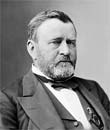
February 5, 1862
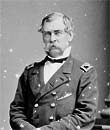
February 6, 1862
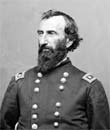
February 6, 1862
At 11:00AM, General Smith's forces begin their march against Fort Heiman along the Tennessee River.
February 6, 1862
Union Flag Officer Foote leads his gunboat flotilla against Fort Henry. The action takes place from 11:00AM until about 1:55PM and is in concert with land movements of General McClernand and General Smith under General Grant.
February 6, 1862
At 6:00PM on this date, General Grant's troops finally claim (through occupation) Fort Henry on the Tennessee River.
February 6, 1862
Fort Henry, along the Tennessee River in Tennessee, falls to forces under the combine efforts of land and naval forces under the direction of General Grant. He then turns his attention eastward towards enemy-held Fort Donelson along the Cumberland River.
February 8, 1862
The Union Navy is victorious over Confederate forces at Roanoke Island in North Carolina.
February 8, 1862
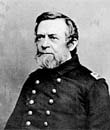
February 10, 1862
Confederate forces of the "Mosquito Fleet" fall to elements of the Union Navy near Elizabeth City, North Carolina as part of the Battle of Elizabeth City. The Mosquito Fleet was originally in service to the state and later passed to the Confederate Navy.
February 11, 1862
General Grant orders an advanced force to begin their march towards Fort Donelson.
February 12, 1862
Despite the combined strength of General McClernand and Smith's divisions, General Grant is forced to stop within twelve miles of Fort Donelson as he remains outnumbered.
February 13, 1862
Forces under the command of Union General Ulysses S. Grant begin their attack to take Fort Donelson along the Tennessee River.
February 14, 1862
Under heavy and accurate fire, Union Flag Officer Foote's gunboat floatilla are repelled by the guns of Fort Donelson.
February 16, 1862
Union General Grant is victorious at Fort Donelson along the Tennessee River in Tennessee. 14,000 prisoners are taken after the General demands an "unconditional and immediate surrender" of the enemy.
February 20, 1862
Union Captain David Farragut arrives outside of New Orleans, Louisiana with his naval forces in tow. He takes up position at Ship Island near Biloxi, Mississippi. This is part of the campaign to retake the strategically important port city.
February 28, 1862
The Battle of Island Number Ten (New Madrid, Missouri) begins. Union forces are led by John Pope and Andrew Footer against Confederate foes headed by John McCown and William Mackall. Six Union gunboats are aided by eleven mortar rafts, facing a Confederate force of 7,000.
March 8, 1862
In the Battle of Hampton Roads, Virginia, CSS Virginia tangled with Union Navy forces n an effort to help unseat the Blockade.
March 9, 1862
In waters off of Hampton Roads, Virginia, CSS Virginia squares off against USS Monitor in naval history's first duel between two ironclad warships. The engagement ends in a draw.
March 9, 1862
At 7:00AM CSS Virginia departs Norfolk and heads to Hampton Roads to finish off USS Minnesota.
March 9, 1862
CSS Virginia is met by USS Monitor in what would come to be known as the "Battle of the Monitor and the Merrimack". Merrimack was the former name of CSS Virginia prior to her conversion as a Confederate ironclad.
March 9, 1862
Fighting between USS Monitor and CSS Virginia continues until 12:15PM at which point CSS Virginia withdraws. The battle, for all its importance to both sides, is labeled indecisive as little headway is made for either party. The Battle of Hampton Roads is over.
March 14, 1862
The Battle of New Bern is had in Craven County, North Carolina. 11,000 Union soldiers are supported by fourteen gunboats against a Confederate Army showcasing 4,000 troops and single cavalry regiment. The result is a Union victory with minimal losses on both sides.
March 14, 1862
New Bern, North Carolina falls to a combined Union land-naval force led by General Ambrose Burnside.
April 4, 1862
Gneeral John Pope's Union forces at New Madrid, Missouri, complete the construction of a canal intended to bypass Confederate firepower along the Mississippi River at Island Number Ten.
April 4, 1862
The Peninsular Campaign begins under the leadership of Union General George McClellan (Army of the Potomac). The target is the Confederate capital of Richmond, Virginia. By April 30th, Union forces will number 115,350 strong against an estimated force of up to 100,000 Confederates.
April 8, 1862
The Battle of Island Number Ten draws to a close as the Union claims the victory. Some 7,000 Confederates surrender in the aftermath.
April 11, 1862
Fort Pulaski in Georgia falls to Union forces. The forts strategic placement at the mouth of the Savannah River made it important for both sides.
April 24, 1862
The Confederate fleet near New Orleans, Louisiana is destroyed by a Union force under the command of Flag Officer David Farragut.
April 24, 1862
CSS Stonewall Jackson, launched in January of 1862, is driven ashore and burned and pressured by Union Navy elements.
April 25, 1862
With no more fight left, Confederate forces surrender the important port city of New Orleans to Union elements.
April 28, 1862
Confederate elements at Fort St. Philip and Fort Jackson (New Orleans) surrender to Union forces.
May 5, 1862
A Confederate river fleet voyages out of Memphis, Tennessee and meet a Union squadron - Southern forces are repelled in the ensuing battle.
May 10, 1862
A naval engagement is fought four miles up river from Fort Pillow in Tennessee with the Confederates claiming the victory.
May 11, 1862
CSS Virginia, no longer able to operate as a true ironclad and relegated to heavy battery duty, is scuttled at Hampton Roads.
May 11, 1862
After having run aground near Craney Island, Virginia, CSS Virginia is set alight by her crew.
May 13, 1862
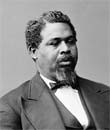
May 15, 1862
Confederate guns at Drewry's Bluff turn back the James River Flotilla approaching Richmond. The squadron had managed to reach within 8 miles of the Confederate capital city.
June 6, 1862
Memphis, Tennessee is surrendered by Confederate forces following a running naval battle.
June 28, 1862
Union Navy boats pass under the guns of Vicksburg to reach friendly forces up the Mississippi River.
July 16, 1862
For the first time in US Naval history, the rrank of Rear Admiral is attained - the honor given to David Farragut.
July 31, 1862
From a position at Coggin's Point in Virginia, Confederate guns manage little damage against Union warships located near Harrison's Landing.
August 5, 1862
After developing mechanical issues, CSS Arkansas is abandoned on the Mississippi River and blown up by Confederate forces near Baton Rouge, Louisiana.
September 5, 1862
CSS Alabama captures the Ocmulgee in the Azores. This marks the Confederate vessel's first claim of a commercial vessel. The enemy ship is burned while its crew is taken prisoner.
September 25, 1862
Union warships bombard Confederates at Sabine City, Texas. The defenders are driven away.
November 3, 1862
CSS Cotton and shoreline guns at Berwick Bay, Louisiana, drive away Union naval forces.
November 3, 1862
Union ground forces, aided by five gunboats, attack Confederate positions at Bayou Teche in Louisiana.
December 7, 1862
CSS Alabama is forced to release a captured steamer carrying 640 persons, including 140 Union troops, as it lacks the facilities to take them on.
December 12, 1862
USS Cairo is sunk by an electrically-detonated Confederate naval mine. The action takes place at Yazoo River near Haines Bluff, Mississippi.
December 14, 1862
Union General Benjamin Butler is relieved of command of the Department of the Gulf by General Nathaniel Banks.
January 1, 1863
Union Navy forces move back into position around Galveston, Texas, ensuring the naval blockade stays in place.
January 14, 1863
Bayou Teche, Louisiana is site to another Union-versus-Confederate engagement. This action involves both land forces and gunboat support for the Union.
January 15, 1863
CSS Florida conducts various raids down the East Coast of the United States and beyond, her journey beginning in the port-city of Mobile, Alabama.
January 21, 1863
Confederate warships capture several Union vessels at Sabine Pass in Texas. This success alleviates the naval blockade for a time.
January 29, 1863
A Confederate supply ship, Princess Royal, is intercepted by Union naval forces near Charleston Harbor, South Carolina.
January 30, 1863
Union land forces, aided by the Navy, cut-off enemy supply lines running from North Carolina into Richmond, Virginia.
January 31, 1863
Union naval forces at Charleston Harbor, South Carolina, are defeated in a raid by CSS Palemetto State and CSS Chicora.
February 14, 1863
After running aground in the Black River (Louisiana), USS Queen of the West is taken by Confederate forces.
February 24, 1863
USS Indianola is grounded by Confederate warships and taken over. The action takes place near Warrenton in Mississippi.
February 28, 1863
CSS Rattlesnake (fmr CSS Nashville) is destroyed by Union warships at Fort McAllister near Savannah, Georgia.
March 11, 1863
In an action at Greenwood, Mississippi, Union warships fail to neutralize Fort Pemberton.
March 14, 1863
Despite heavy damage, a Union fleet under the direction of Admiral Farragut gets by the confederate guns of Port Hudson in Louisiana.
March 14, 1863
Steele's Bayou Expedition is begun. The operation sees a combined Union force directed by General Grant and Rear Admiral Porter attempt to reach the rear of Vicksburg, Mississippi. The expedition would last until March 27th.
March 17, 1863
Confederate forces at Fort Pemberton block General Grant's passage along the Yazoo River in Mississippi.
March 27, 1863
Union forces attempting to reach Vickerburg's rear are repulsed as part of Steele's Bayou Expedition. Union leaders included General Grant and Admiral Porter.
April 1, 1863
CSS Georgia is commissioned for service into the Confederate Navy near Brest, France. The vessel was constructed in Scottish shipyards.
April 7, 1863
Union ironclads engage the defenses at Fort Sumter but do not manage to break the will of the defenders.
April 8, 1863
USS Keokuk is lost following its previous day's participation in the engagement at Fort Sumter.
April 27, 1863
Confederate forces are successful in driving back a Union navy attack at Grand Gulf, Mississippi.
June 12, 1863
Confederate navy elements begin a period of raids against Union shipping along the American East Coast.
June 24, 1863
Confederate navy forces conclude their raids against Union shipping targets along the northeast American coast.
July 10, 1863
Charleston, South Carolina is under bombardment from Union naval and land forces. Ironclads are directed by Admiral John Dahlgren.
August 5, 1863
USS Commodore Barney is the recipient of a Confederate electrically-powered torpedo. The incident is recorded at Dutch Gap, Virginia. While not sunk, the Barney is severely damaged.
August 29, 1863
CSS Hunley, a Confederate submarine, sinks in Charleston Harbor waters (South Carolina) while undergoing diving actions.
September 6, 1863
Under pressure from a Union bombardment, Confederate forces relocate from Fort Wagner in Charleston Harbor, South Carolina.
September 8, 1863
Union gunboats fail to defeat Confederate forces at Sabine Pass (Texas). Two of the three attacking warships are taken by the South.
September 8, 1863
A night time Union naval attack fails to retake Fort Sumter in Charleston Harbor. The attack is directed by Admiral John Dahlgren.
October 5, 1863
USS New Ironsides is attacked (by way of spar torpedo) by the submarine CSS David in Charleston, South Carolina waters.
October 15, 1863
CSS Hunley, the famous Confederate submarine, sinks again in Charleston waters. All aboard die in the accident.
December 7, 1863
The Union steamer USS Chesapeake is taken over by Confederate soldiers in civilian clothing. The brazen action takes place off the Massachusetts coast. The vessel is relocated to Canadian waters of Nova Scotia.
February 2, 1864
USS Underwriter is claimed and destroyed by Confederate warships in the Neuse River (North Carolina).
February 7, 1864
Jacksonville, Florida is the target of a Union force led by General Truman Seymour. Half of the attacking force is made up of black soldiers. The city is taken.
February 17, 1864
CSS Hunley becomes the world's first submarine to sink a surface vessel. The target becomes USS Housatonic in Charleston Harbor. However, CSS Hunley is lost in the action.
March 4, 1864
CSS Don, a Confederate Navy blockade runner, is run down and captured by USS Pequot near Beaufort, North Carolina.
March 12, 1864
Union gunboats and ironclads make their way towards Shreveport, Louisiana along the Red River.
April 8, 1864
Confederate forces at Sabine Crossroads along the Red River stop , and drive back, a Union advance.
April 9, 1864
Pleasant Hill, Louisiana is the site of a Union victory over Confederate elements as the Red River Campaign advances. Union General Nathaniel Banks directs the victors.
April 12, 1864
Confederate General Thomas Green is killed during a cavalry attack on a Union gunboat flotilla at Blair's Landing in Louisiana.
April 19, 1864
USS Southfield falls victim to an attack by CSS Albemarle near Plymouth, North Carolina. Southfield is sunk in the act. This loss drives Union naval forces away.
April 27, 1864
Tycoon is captured by the sloop-of-war CSS Alabama. This marks the final ship taken by the Confederate vessel.
May 5, 1864
Attempting to push past the Union blockade, a naval action involving CSS Albemarle takes place at the Roanoke River opening. Neither side makes any headway.
May 6, 1864
USS Commodore is sunk during a Confederate attack by way of torpedo. This takes place on the James River (Virginia).
May 8, 1865
On this date, Confederate forces lay claim to five Union ships. The action occurs near Alexandria, Louisiana.
May 15, 1864
The Battle of Fort Darling - or Battle of Drewry's Bluff - is had pitting five Union warships against an artillery-laden Confederate fort in Chesterfield County, Virginia. It is a Confederate victory for General Beauregard. Union General Benjamin Butler is handed the defeat.
May 25, 1864
CSS Albemarle survives a Union torpedo attack at Albemarle Sound in North Carolina waters.
July 3, 1864
James Island, Charleston Harbor is the site of a successful Confederate defense of Fort Johnson against Union attackers.
July 4, 1864
A new provision signed into law by President Lincoln now guarantees a $100 yearly bonus to Union troops.
August 2, 1864
The Battle of Mobile Bay begins pitting a Union force of 12 wooden ships, 4 ironclads and 2 gunboats against a Confederate force of 3 gunboats and one ironclad. Additionally, 5,500 Union troops make up a land contingent while the Confederates field 1,500 men. The battle would last until August 23rd. David Farragut and Gordon Granger are the Union leaders. The Confederates are led by Franklin Buchanan and Richard Page.
October 19, 1864
CSS Shenandoah (formerly the British vessel Sea King) enters service with the Confederate Navy.
October 27, 1864
CSS Albemarle, commissioned as recently as April 1864, is sunk by a Union spar torpedo. She is captured and later raised and sold off.
November 4, 1864
Three Union gunboats in the Tennessee River are claimed by Confederate forces near Johnsonville, Tennessee.
December 13, 1864
New York City celebrates the arrival of Admiral David Farragut after his major successes in New Orleans, Vicksburg, and Mobile Bay.
December 21, 1864
The Confederate Navy's Savannah Squadron fleet is ordered destroyed to keep the vessels from falling into enemy hands.
December 25, 1864
Again, defenders at Fort Fisher (Wilmington, North Carolina) survive another Union attempt to take their position. This time the Union enacts a combined land and sea attack to no avail.
January 6, 1865
CSS Stonewall, built in French waters, leaves its port in Denmark en route to the United States.
January 24, 1865
A Confederate attempt to assault General Grant's headquarters at City Point (Virginia) is called off.
February 4, 1865
John C. Breckinridge is appointed the new Secretary of War for the Confederacy. The appointment is managed by Confederate President Davis himself.
February 6, 1865
Robert E. lee is named chief commander of the entire Confederate military by Confederate President Jefferson Davis.
March 4, 1865
A new national flag is approved by the Confederate Congress - the Confederate National Flag, Third Pattern. The pattern is the third of three seen during the conflict with the First Pattern showcasing a ring of stars and three stripes (red-white-red). The Second Pattern showcases the traditional Confederate flag in the upper left corner but the broad use of white space is deemed too close to a flag of surrender. Thus a new flag is commissioned as the Third Pattern.
April 2, 1865
The Battle of Fort Blakely begins in Baldwin County, Alabama. It is part of the Mobile Campaign and pits 45,000 Union attackers against 4,000 Confederate defenders. This battle marks the last combined-force engagement of the Civil War.
April 24, 1865
Confederate forces set alight the side-wheel steam ram CSS Webb lest it should fall into enemy hands. This takes place in New Orleans waters.
June 6, 1865
Amnesty is offered by the federal government to those Confederate prisoners-of-war who agree to not have fought against the Union by choice.
June 28, 1865
The last artillery shot of the war is fired, this by CSS Shenandoah, across the bow of an American whaler vessel. Eleven ships of the type are captured.
July 18, 1865
The European Squadron is reactivated by the United States Navy. Admiral Louis Goldsborough is placed in command.
August 2, 1865
News of the war's end reaches the crew of CSS Shenandoah which then sets sail for the neutral waters of Liverpool in England. Lt James Waddell serves as her captain.
August 30, 1865
Judah Benjamin, former Confederate Secretary of State, safely reaches English shores.
September 5, 1865
Ports along the south of the United States are now all officially open for business.


